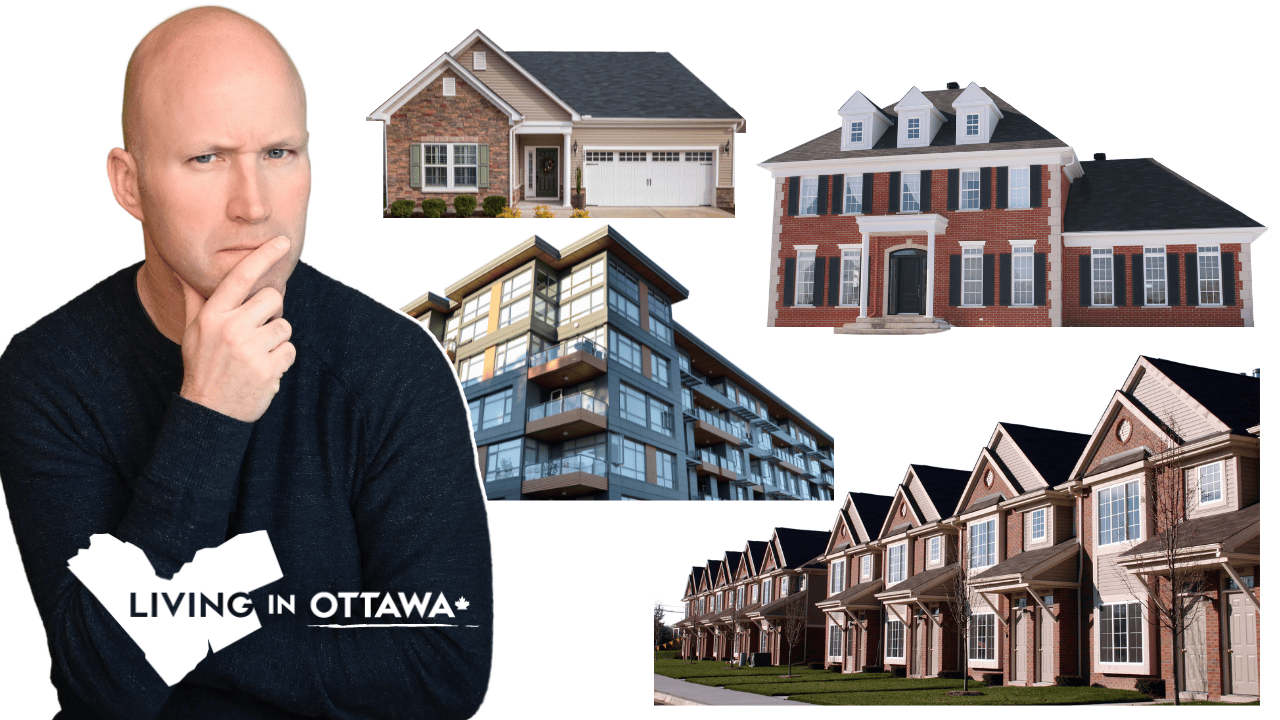The Evolution of Ottawa – Past, Present, and Future
The Evolution of Ottawa – Past, Present, and Future. From the gothic spires of the Parliament Buildings to the sleek glass towers of the business district, the city’s skyline is a timeline of architectural ambition and urban evolution. But how did we get here, and where are we heading? Strap in as we take a sky-high journey through the past, present, and future of Ottawa’s skyline.
Welcome to our aerial adventure through the evolving skyline of Ottawa! In this video, we’ll explore how Ottawa’s map footprint has transformed from modest beginnings into the beautiful panorama we see today. As we hover between the eras, we’ll also cast our gaze forward, speculating on how emerging trends and innovations might shape the city’s future skyline. Join us as we embark on a journey through time, exploring the evolution of Ottawa’s growth from its past, through its present, and into its future.
Foundations of the Skyline – The Past
The story of Ottawa’s skyline begins not with towering skyscrapers but with the foundational stones of its earliest iconic structures and the natural landscapes that shaped its urban development. The early architecture of Ottawa, much like the city itself, was shaped by a blend of necessity, ambition, and the rich tapestry of Canada’s cultural heritage. Among these foundational buildings, the Parliament Buildings and the Château Laurier stand as monumental bookmarks in the city’s architectural history, setting the stage for the evolution of the capital’s skyline.
The Parliament Buildings, with their soaring Gothic Revival spires, were more than just the epicenter of Canadian politics; they were a declaration of Ottawa’s national significance. This architectural choice reflected a broader Victorian Gothic trend that swept through Canada in the 19th century, symbolizing strength, tradition, and a deep connection to European heritage. Similarly, the Château Laurier, with its fairy-tale castle appearance, brought a touch of Edwardian elegance and grandeur, serving as a gateway for visitors and a symbol of the city’s burgeoning cultural sophistication.
The construction of the Rideau Canal, a remarkable feat of engineering and a UNESCO World Heritage Site, played a pivotal role in the city’s early development. Originally designed for military purposes, it inadvertently became a catalyst for Ottawa’s urbanization, facilitating commerce, transportation, and the eventual expansion of the city’s core. The canal, alongside the city’s original tramways, underscored Ottawa’s early reliance on transit and waterways, shaping the layout and growth patterns of the emerging capital.
Ottawa’s designation as the capital of the Province of Canada in 1857 by Queen Victoria was a turning point in the city’s urban development. This singular event shifted the trajectory of Ottawa, from a modest lumber town to the political and cultural heart of a burgeoning nation. The choice was strategic, considering Ottawa’s geographical location, away from the American border and nestled between English and French Canada, symbolizing unity and security.
The architectural landscape of Ottawa’s past was not limited to grand edifices and political strongholds. Residential areas began to reflect the Victorian and Edwardian influences seen in the city’s landmark buildings, with intricate brickwork, ornate gables, and the serene symmetry of Victorian gardens. These styles spoke of a city that was coming into its own, embracing the industrial revolution while holding onto the charm and elegance of its colonial roots.
The early days of Ottawa were also marked by the rise of various industries, including logging, which played a significant role in the city’s economic development. The Ottawa River, a lifeline for the logging industry, helped shape the city’s industrial landscape, bringing workers, settlers, and entrepreneurs to the capital, each contributing to the city’s growing diversity and architectural richness.
As Ottawa expanded, so did its architectural ambitions, slowly transforming the skyline from a collection of modest, functional buildings into a canvas for architectural innovation and urban development. The city’s early reliance on transit, the strategic importance of the Rideau Canal, and the cultural significance of its iconic buildings laid the groundwork for the evolution of Ottawa’s skyline. These elements, combined with the influence of historical events and architectural trends, forged the foundation of a capital city poised for growth and transformation.
The Modern Canvas – The Present
As we pivot from the historical to the contemporary, Ottawa’s skyline reveals a dramatic transformation in architectural styles and urban planning principles. The city, once defined by its monumental Gothic Revival and Victorian buildings, has embraced a new era of development.
The latter half of the 20th century marked a period of rapid expansion and modernization for Ottawa. The city stretched its boundaries beyond the original core, with Nepean, Gloucester, and other surrounding areas becoming integral parts of the urban fabric during the 1950s and 1960s. This expansion was accompanied by a shift in architectural styles and urban planning. The skyline started to diversify with the growth of apartment and condo projects, reflecting a global trend towards higher density living.
As Ottawa expanded, the map layout evolved significantly. The once compact city adapted to accommodate its growing population and changing needs. Major arterial roads and highways were constructed to improve connectivity between the new suburbs and the city center, reshaping the city’s layout and influencing its development patterns.
Today, Ottawa’s urban development continues to evolve, with current trends focusing on sustainable building practices and the integration of green spaces into the urban landscape. The city has seen a rise in infill residential developments, which rejuvenate long-established neighbourhoods by introducing new homes into existing urban areas. This approach helps to increase density and diversify housing options without expanding the city’s footprint, which can be a costly burden on resources as the city tries to support suburban sprawl.
Changes to zoning allowances reflect Ottawa’s strategic focus on urban intensification. By encouraging development within the urban core and along main transit routes, the city aims to create a more compact, sustainable, and vibrant urban environment but this is a difficult task given Ottawa has the largest urban footprint by city boundary than any other city in Canada. Certainly not as intense or populated as others but the geographical size is immense. These efforts towards urban intensification are designed to promote walkability, reduce reliance on cars, and enhance the quality of life for residents.
As we observe Ottawa’s skyline today, it’s clear that the city has entered a new chapter in its architectural and urban planning story. The modern canvas of Ottawa’s landscape is a reflection of its ongoing commitment to innovation, sustainability, and thoughtful growth although between the urban intensification and suburban sprawl the city has become a duality of conflicting directions. It can sometimes be confusing to understand which direction Ottawa wants to lean towards from a urban development and planning perspective.
Ongoing Projects and Their Impact
There are many current and future development projects which indicate what Ottawa’s future landscape might look like. Just a few of these are:
1. LeBreton Flats Ottawa
LeBreton Flats represents one of Ottawa’s most ambitious redevelopment projects, aiming to transform a historically industrial area into a vibrant mixed-use community. This project envisions a blend of residential, commercial, and public spaces, including parks, plazas, and cultural venues. A focal point of the development is to enhance the city’s waterfront, making it accessible and enjoyable for all. The project aims to create a dynamic neighbourhood that respects the area’s heritage while looking forward to a sustainable and innovative future.
2. LRT Light Rail Transit Expansion OTTAWA
The Light Rail Transit (LRT) expansion in Ottawa is a cornerstone of the city’s efforts to improve public transportation infrastructure, reduce congestion, and promote sustainable travel. The LRT’s Stage 2 expansion aims to extend the rail network further east, west, and south, connecting more neighbourhoods and facilitating easier commutes. This project underscores Ottawa’s commitment to building a world-class public transportation system that meets the needs of a growing population.
3. Lansdowne Park Development OTTAWA
Lansdowne Park has undergone a transformation to become a premier destination for entertainment, sports, and retail in Ottawa. The project included the revitalizing of historic buildings, the addition of new commercial spaces, and the creation of green, public areas. This initiative blended the site’s rich history with modern amenities, creating a unique urban park that serves as a year-round hub for residents and visitors alike.
4. Tunney’s Pasture Future Development OTTAWA
Tunney’s Pasture is poised for a comprehensive redevelopment that will transition it from a predominantly government office complex to a mixed-use community. The vision includes residential buildings, office space, retail outlets, and parks. This development aims to integrate Tunney’s Pasture seamlessly with surrounding neighbourhoods, fostering a lively and inclusive community atmosphere while accommodating the area’s workforce.
5. Suburban Expansion OTTAWA
Ottawa’s suburban expansion focuses on creating sustainable and livable communities outside the city’s core. This includes the development of new housing, commercial spaces, schools, and parks in areas like Barrhaven, Kanata, and Orleans. The goal is to manage growth responsibly, ensuring that infrastructure keeps pace with development and that new communities are well-connected to the rest of the city.
Emerging Architectural Trends in OTTAWA
The architectural trends shaping the future of Ottawa’s skyline are both innovative and responsive to global challenges. Smart buildings, equipped with advanced technologies for energy efficiency, sustainability, and occupant comfort, are becoming more prevalent. These buildings not only contribute to a greener city but also offer enhanced living and working environments.
Vertical gardens and green roofs are another trend gaining traction, transforming buildings into living ecosystems. These features not only beautify the urban landscape but also play a crucial role in improving air quality, reducing urban heat islands, and supporting biodiversity. As Ottawa looks forward, the integration of nature into architecture is likely to become a hallmark of its skyline.
Challenges and Opportunities Ahead FOR OTTAWA
The journey towards the future skyline of Ottawa is not without its challenges. Urban and suburban sprawl remains a concern, necessitating thoughtful planning to balance growth with the preservation of natural and agricultural lands. Environmental sustainability is another critical issue, driving the need for innovative solutions in construction, energy use, and transportation.
However, these challenges also present opportunities. Technological innovation, from smart city technologies to green building materials, offers new tools for creating a more sustainable, livable city. The push towards increased urban intensification can lead to more vibrant, diverse communities, enhancing the quality of life for residents.
Ottawa’s skyline is a testament to the city’s evolving story, a narrative of architectural ambition, cultural evolution, and thoughtful urban planning. The Gothic Revival spires and Victorian facades of the past have given way to the glass and steel of the present, setting the stage for a future that embraces sustainability, technology, and community. As Ottawa continues to grow and change, its skyline will mirror these shifts, offering a glimpse into the aspirations and values of its people. The future skyline of Ottawa, with its blend of innovation and heritage, sustainability and beauty, will stand as a proud testament to the city’s journey.
And if you are thinking about relocating to Ottawa feel free to reach out to us. Give us a call – shoot us a text – send us an email – or even wrap it in a bow and send it first class because we got your back when moving to Ottawa or anywhere across Canada.
You can learn more about the city of Ottawa by visiting its official website: https://ottawa.ca/en.
RECOMMENDED VIDEOS:
THE DO’S AND DON’TS OF MOVING TO OTTAWA
TOP FUN AND AFFORDABLE NEIGHBORHOODS FOR YOUNG FAMILIES IN OTTAWA




